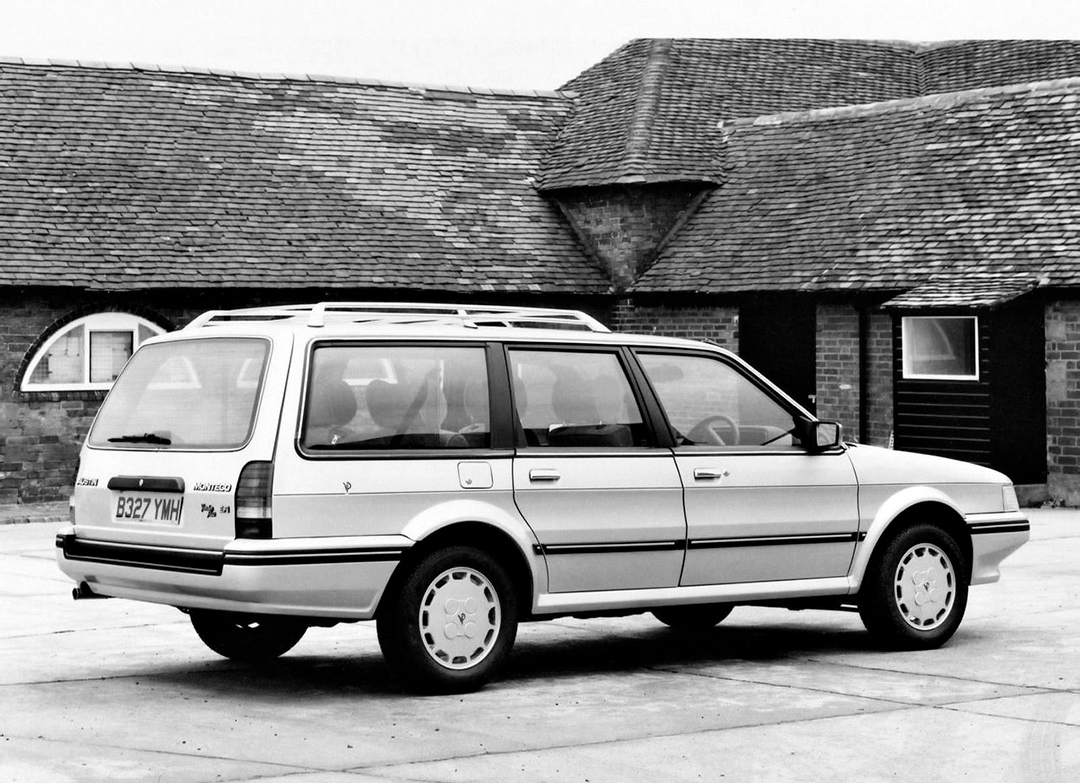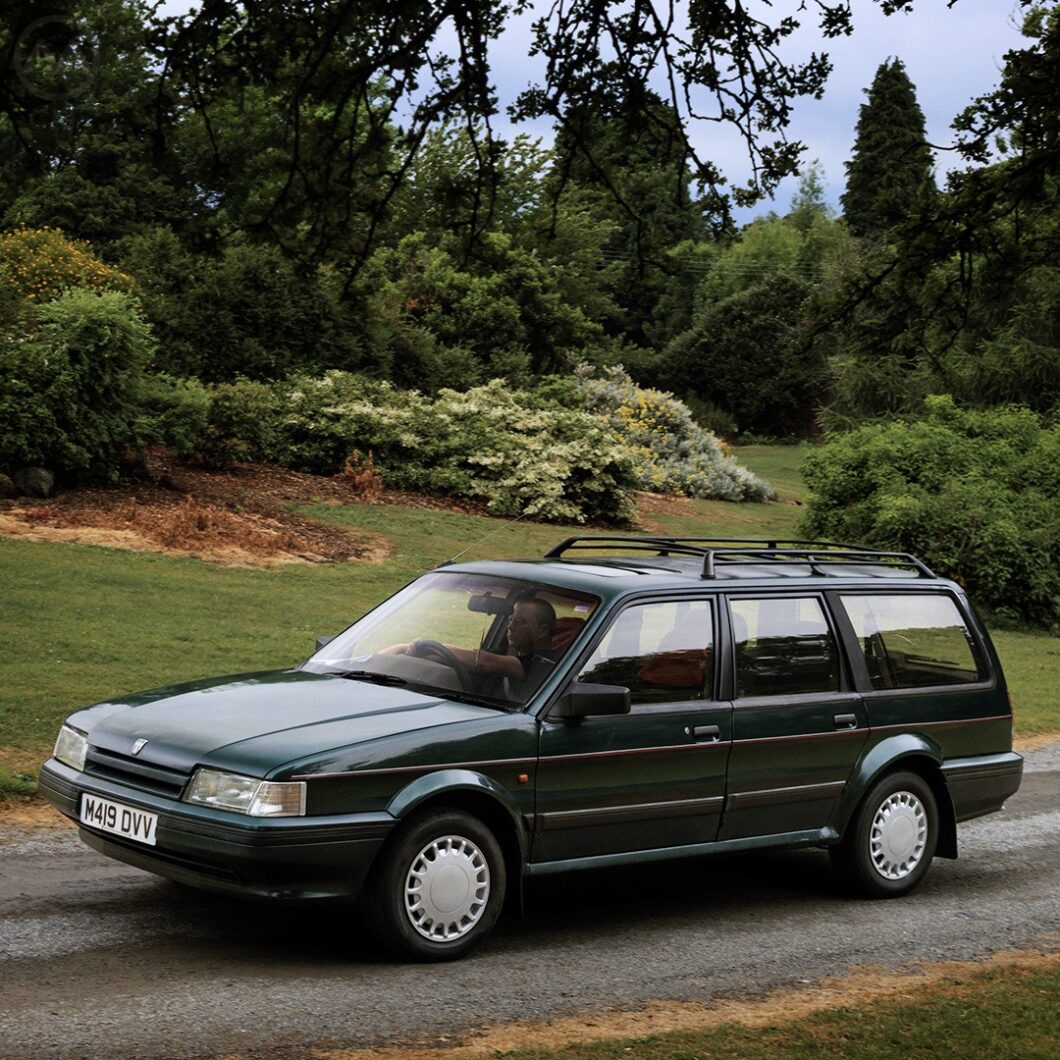When BMW bought the Rover in early 1994—a moment that has lived in infamy for many parties ever since—its German bosses were surprised to learn that the former Austin Maestro and Montego were still in production. By then, some 12 years after the Maestro had debuted, they were being built on an informal assembly line where bodies were moved around by hand. The building in which the heavily automated, costly production line that had stamped them out for the previous decade had been sold off by former owner British Aerospace (BAe) a year earlier.
This is one of the very last Rover Montego builds (the Austin name was dropped in 1986, but the cars were never actually officially badged as Rovers in the U.K.). It was built in mid-1994, and production quietly ended that December. When the end came, it was a quiet denouement for what became the final Austin vehicle and a car that held much promise ten years earlier.
By the end, the Montego had largely overcome build quality problems and repeated strike-related issues to evolve into a decent budgetmobile. It was a dated car by the early 1990s, but skinflinty buyers liked its Perkins diesel (added in 1988) and the Estate was always considered the cleanest-looking and most practical of the bunch. But by the time of the diesel (the only engine offered in that final year), it was way too late for this car to ever live up to its initial promise.
In some ways, the car’s whole evolution was like this. These cars were never offered in the U.S., so if you’re really curious to dive deeper into their history, we recommend venturing over to AROnline or the British Leyland Chronicles, but we’re fans of both. The Maestro, project LC10, came first, but the Montego (LM11) was always intended to be a close relative.
British Leyland to British Aerospace
When Michael Edwardes took over as British Leyland’s Chairman in 1977, he initiated an entirely new round of vehicle development, one aimed at vastly improving shared costs and production efficiencies across BL’s vast range. The first of these cars became the Austin Metro, launched in 1980, the second was BL’s first tie-up with Honda, the Triumph Acclaim. The Maestro would be the third, replacing Austin’s Allegro and Maxi, while the Montego would be the fourth, replacing the Princess/Ambassador and Morris Ital.
Work began on the LC10 Maestro in 1977 with a target launch date of 1980. In typical BL fashion, the project took considerably longer than anticipated, but in fairness, the Maestro was a very modern car when it finally arrived in early 1983. Some old BL practices, like the gearbox-in-the-sump and Hydragas suspension, were abandoned, but there were whiz-bang features like digital instruments and an electronic engine management system.
And it looked modern, even if it was, engineering-wise, not too dissimilar to a VW Golf (which it borrowed some pieces from, for good and ill).
The Montego would stretch this platform into a sedan and an estate, but originally, it was just a trunk-backed (booted) version of the Maestro. That car’s styling, done by Ian Beech working under longtime Rover/British Leyland designer David Bache, sat very awkwardly on a three-box sedan. Many different design proposals, some Audi and Ford-like, were considered before a look by designer Roger Tucker was grafted on.
In the middle of this process, months before the Maestro went on sale but more than a year before the Montego followed, senior Designer David Bache was sacked by Edwardes’ successor, BL Chairman Harold Musgrove. Ex-Chrysler man Roy Axe replaced him. Axe took one look at the Montego and declared it a total disaster that needed a complete re-think, but Musgove needed the car in production by the spring of ‘84, so Axe could only make minor changes.
The Austin Montego
Axe later said that the Montego was already antiquated when it debuted, but that seems pretty harsh. The square shape wasn’t as modern looking as Vauxhall’s J-car Cavalier or the Ford Sierra, cars which would be its direct opponents, but mechanically; it was light years ahead of the Morris Ital and Musgrove and the company badly needed new models after the old cars had withered on the vine for so long, and the Cowley factory had cost £174M to retool. The slightly fancier Honda-based Rover 200 would also come out in 1984, but it was smaller and would cost more.
The Estate, penned by designer John Ashford, was both cleaner-looking and more practical and probably the best of the LC10/LM11 designs. It debuted at the British Motor Show in October of 1984.
The car came out looking better than Axe had described it, and early press reviews were positive. But like the Maestro, the cars were hit hard by early quality issues and repeated strikes in 1984 and 1985. The issues were worst on the early Maestros, including self-destructing wheel bearings and trouble with its early R-series engine, but the reputation stuck.
A major opportunity was also missed due to strikes. When the Ford Sierra first debuted it was met with a very cool reception by the U.K.’s all-important fleet market, which the Cortina had dominated for many years. That left a window open for the Montego, but strikes and a growing reluctance about saddling up with potentially unreliable BL cars meant it was the Vauxhall Cavalier, not the Montego, that ended up filling the void until Ford started slashing prices.

British Aerospace and the Rover Montego
It wasn’t until 1988-89 that by then BAe-owned Rover got a real grip on quality (no doubt some British readers will disagree, but feel free to correct us) and introduced the badly-needed diesel. The Austin name, associated with the past, was dropped at the end of 1986, but neither the Maestro nor the Montego ever got official “Rover” badges even though they were marketed as Rovers. There were hot MG versions of both, but they were dropped in 1991.
Early on, the Montego used the 1.3-liter A-series as the base engine (~68 hp), with the 1.6-liter S-series (~87 hp) and 2.0-liter O-series (several variants, including a 150 hp turbo) optional. The Perkins Prima turbodiesel, with 81 hp but a very light appetite for fuel, arrived in 1988. By then, there was an all-new, even more modern Vauxhall Cavalier, which made the Montego seem old-fashioned in comparison.
In the autumn of its years the Montego made a really good budget wagon, but sales, which had never lived up to expectations, continued to dwindle.
A Honda-based replacement was planned but never happened, nor did a major facelift that was scuttled by the financial issues of 1985-86. BAe was of little help, pushing the company to lean on Honda and selling off assets, so the cars rolled ever onward, giving dealers a cheaper and more utilitarian alternative to the Honda-based Rovers until the BMW era.
The late-era Rover Montego (it actually did get badged that way in France and some export markets) gets no respect, and these cars are relatively rare now, so it was very nice to see the really good green one featured in this story at the 2023 Kilbroney Vintage Show. It was one of our most liked photos ever posted to social, so we decided to put this story up here on the website. Happy Wagon Wednesday!


The Montego estste is the car driven in the show “The Last Detective”